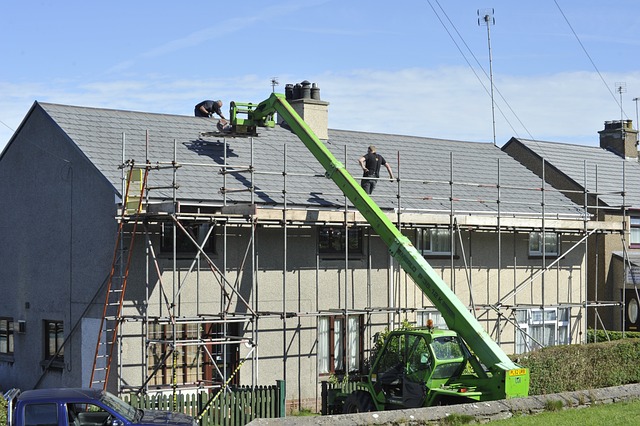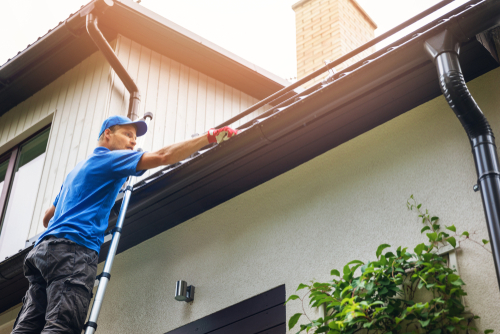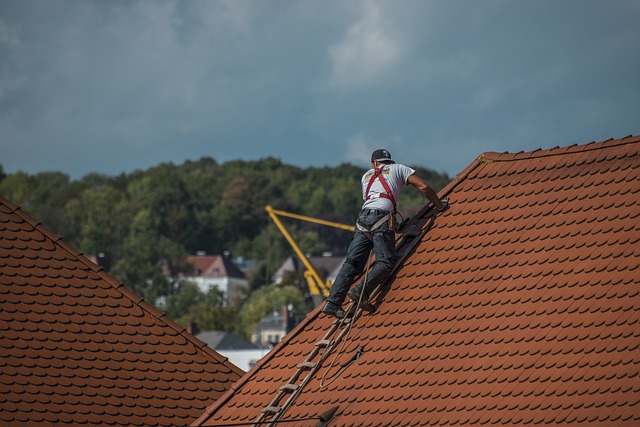March 12, 2024 - Benjamin Ehinger
Roofing Maintenance Essentials: Protecting Your Home from the Top Down
CALL NOW 844-762-8449
Maintaining the roof of your home is crucial for ensuring its longevity and structural integrity. As a homeowner, you might need a roofing dumpster rental from Waste Removal USA when performing roofing maintenance to manage debris safely and efficiently. Regular roof maintenance is important to avoid potential leaks, damage from weather elements, and to extend the life of your roof. By conducting periodic roof inspections, you can identify and address minor issues before they escalate into costly repairs.
Consider roofing maintenance as an integral part of your home care routine. Engaging in practical roof maintenance strategies, such as cleaning gutters and inspecting for damaged shingles, can safeguard your home against water damage and improve its overall performance. Optimizing your approach with advanced maintenance and repair techniques might require professional help. Therefore, choosing the right roofing professional is essential, as they can provide expertise in enhancing roof longevity and addressing complex issues.
 Effective roofing maintenance involves regular cleaning, prompt leak repair, and ensuring good ventilation to protect your home from damage. These practices extend the life of your roof and prevent costly issues down the line.
Effective roofing maintenance involves regular cleaning, prompt leak repair, and ensuring good ventilation to protect your home from damage. These practices extend the life of your roof and prevent costly issues down the line.
 Selecting a qualified roofing professional is critical for ensuring the longevity and safety of your home. A skilled contractor can provide comprehensive services ranging from inspections to repairs, ensuring that your roof remains in optimal condition.
Selecting a qualified roofing professional is critical for ensuring the longevity and safety of your home. A skilled contractor can provide comprehensive services ranging from inspections to repairs, ensuring that your roof remains in optimal condition.
Key Takeaways
- Regular inspections and maintenance are key to preventing roof damage.
- Utilize professional services for advanced maintenance and repairs.
- Ensure emergency preparedness to respond efficiently to roofing issues.
Understanding the Basics of Roofing Maintenance
Regular roofing maintenance is crucial to extend the lifespan of your roof and avoid costly repairs. By routinely inspecting your roof and being aware of common issues, you ensure the safety and structural integrity of your home.The Importance of Regular Roof Inspections
Regular roof inspections are critical in identifying potential problems before they become severe. You should inspect your roof shingles for signs of wear—look for cracked, missing, or curled shingles. Check for leaks in the attic, as these can indicate compromised roofing components. It is recommended to examine your roof at least twice a year and after any severe weather events.Recognizing Common Roof Issues
Being familiar with common roof issues can help you address them promptly:- Algae and moss: These can cause unattractive dark streaks and may damage asphalt shingles over time.
- Moisture and mold: Excessive moisture can lead to mold growth, which can deteriorate roofing materials.
- Debris in gutters: Keep gutters clear to prevent water from backing up and causing rot.
- Structural damage: Look for signs of sagging or other indications of structural integrity compromise.
Key Roofing Components and Their Roles
Your roof is composed of several key components, each with vital roles:- Shingles or tiles: Act as the first line of defense against the elements. Flat roofs require different maintenance than asphalt shingles or tile roofs.
- Chimneys and ventilation: Ensure proper ventilation to reduce heat and moisture buildup that can weaken your roof structure.
- Gutters and downspouts: These direct water away from your home’s foundation and protect against moisture damage.
Practical Roof Maintenance Strategies
 Effective roofing maintenance involves regular cleaning, prompt leak repair, and ensuring good ventilation to protect your home from damage. These practices extend the life of your roof and prevent costly issues down the line.
Effective roofing maintenance involves regular cleaning, prompt leak repair, and ensuring good ventilation to protect your home from damage. These practices extend the life of your roof and prevent costly issues down the line.
Cleaning and Removing Debris
Your roof’s cleanliness is critical in preventing mold, mildew, and lichen. Begin by cleaning gutters to ensure proper water flow and reduce the risk of water damage. Use a leaf blower to remove loose debris from the roof surface. Inspect the flashing, eaves, and vents for accumulated dust or debris. Regular gutter maintenance, especially after storms, prevents blockages and overflows.- Tools to use: Gutter cleaning tools, leaf blower.
- Key areas: Gutters, flashing, eaves, downspouts, vents.
Preventing and Addressing Leaks
Inspect your roof for any potential leaks. Pay close attention to flashing areas since these are common leak sources. If you spot any signs of water damage or suspect a leak, address it immediately to prevent further complications. Keep an eye out for rust or cracks, and make sure that seals are intact.- What to look for: Damaged shingles, faulty flashing, worn sealant.
- How to prevent: Regular inspections, prompt repairs.
Ensuring Proper Ventilation
Proper ventilation is essential to prevent moisture buildup, which can lead to mold growth and reduce the lifespan of your roof. Check that roof vents are unobstructed and functioning correctly. Overhanging tree branches should be trimmed back to prevent damage to vents and the accumulation of damp leaves. Consider installing copper or zinc strips to inhibit the growth of moss and algae.- Importance: Prevents moisture, reduces mold growth.
- Action steps: Clear vents, trim trees, install preventive measures.
Advanced Maintenance and Repair Techniques
Roof maintenance is not just about regular clean-ups; it’s also about addressing and repairing damaged areas before they exacerbate. Knowing how to deal with damaged shingles and understanding when to consider roof replacement are crucial to maintaining a well-functioning roof.Handling Damaged Shingles and Roof Repair
Damaged or missing shingles can lead to leaks and extensive roof damage. If you notice any cracked or missing shingles, it’s essential to take immediate action. The following steps outline what to do:- Assess the Damage: Inspect the area for any further issues like compromised fascia or soffit.
- Gather Materials: You’ll need replacement shingles, roofing nails, and caulk.
- Remove Damaged Shingles: Carefully pry up the surrounding shingles and remove the nails.
- Install New Shingles: Slide the new shingle into place, secure it with roofing nails, and seal edges with caulk.
When to Consider Roof Replacement
A roof replacement is a significant home update that’s best done when repair is no longer a viable option. Here’s when to consider it:- Age of Roof: If your roof is past its typical lifespan, typically 20-25 years, replacement may be necessary.
- Extensive Damage: Multiple areas with severe damage, especially after extreme weather, could call for a replacement.
- Roof Leak Repair: When you’re frequently needing roof leak repairs, it may be more cost-effective to opt for a new roof.
Choosing the Right Roofing Professional
 Selecting a qualified roofing professional is critical for ensuring the longevity and safety of your home. A skilled contractor can provide comprehensive services ranging from inspections to repairs, ensuring that your roof remains in optimal condition.
Selecting a qualified roofing professional is critical for ensuring the longevity and safety of your home. A skilled contractor can provide comprehensive services ranging from inspections to repairs, ensuring that your roof remains in optimal condition.
Finding a Trustworthy Contractor
Experience and Reputation: Begin by researching roofing contractors with a solid track record. Look for companies with extensive experience in residential roofing and check for positive testimonials from past clients. It’s crucial to choose a roofer known for their quality workmanship and reliability.- Ask for references and follow up on them to gauge previous customer satisfaction.
- Scrutinize online reviews and ratings on trusted platforms to build a picture of the contractor’s reputation.
- Validate their credentials by checking with the relevant licensing boards or trade associations.
- Certifications from roofing material manufacturers can be a strong indication of a roofer’s expertise and commitment to best practices.
Understanding Warranty and Quality Assurance
Warranty Options: Examine the warranty offerings from potential roofing companies. A comprehensive warranty can cover not just materials but also workmanship, giving you peace of mind.- Ensure that the warranty terms are clear and offer adequate coverage for both materials and labor.
- Be wary of contractors who do not provide warranty documentation or explain the terms in detail.
- Inquire about the inspection process during and after the roofing project. Proper roof inspections are vital to ascertain that the installation meets industry standards.
- Determine whether the contractor has a process in place for addressing any issues found during inspections and post-installation.
Enhancing Roof Longevity
To safeguard your home and extend the life of your roof, it’s vital to focus on regular maintenance and intelligent design choices.Roof Care and Protection
Proper roof care is paramount in enhancing longevity. Regular inspections and cleaning are essential to prevent the accumulation of debris in valleys and around roof penetrations, which can lead to water pooling and damage. Ensure that flashings around chimneys, vents, and skylights are intact to prevent leaks. Applying protective coatings can also help defend against UV rays and weather events, preserving roofing materials such as shingles. Pay close attention to ventilation; a well-ventilated roof minimizes attic heat accumulation, reducing the risk of shingle damage and attic leaks.- Regularly clean gutters and downspouts
- Inspect and seal flashings and roof penetrations
- Apply protective coatings suited to your roofing material
- Ensure adequate attic ventilation
Smart Roof Design Considerations
When it comes to roof design, opt for materials and styles that suit your local climate. Darker-colored shingles can absorb more heat, which might not be ideal for hot climates. Conversely, a lighter color could be beneficial in reflecting sunlight. Incorporate ventilation strategies into your design to combat moisture and temperature extremes, both of which can shorten a roof’s lifespan. Choose high-quality underlayment and shingles that will provide the first line of defense against weather events. Finally, design valleys and flashings to efficiently channel water off the roof, and consider the placement of pipes and other protrusions to minimize potential leak points.- Select roofing materials suitable for your climate
- Choose a roof color that reflects or absorbs heat as needed
- Design a roof with efficient water drainage
- Prioritize high-quality underlayment and shingles for durability
Emergency Preparedness and Response
Assuring robustness against the unexpected is critical for maintaining your commercial roof’s structural integrity. Regular inspections and proactive measures are key to readiness and swift recovery from any emergencies, especially extreme weather.Managing Roof Damage From Extreme Weather
In the advent of extreme weather events, your commercial roof can suffer significant damage. Having a plan for roof inspections after severe climates is pivotal. You should ensure that your roof is inspected for potential water damage and vulnerabilities, ideally by a professional from the roof’s manufacturer or a certified contractor. A checklist for post-weather event inspections could involve:- Visual Inspections: Look for visible signs of damage such as standing water, debris, or tears.
- Structural Assessments: Have a structural engineer assess for any damage to the roofing substrate.
- Documentation: Keep a record of damages for insurance purposes.
Safety Precautions and Immediate Actions
When a roofing emergency occurs, safety precautions become your utmost priority. Your response plan should include immediate actions to safeguard people and property:- Secure the Area: Prevent access to parts of the building where damage could pose a hazard.
- Control Water Intrusion: If safe to do so, take temporary measures to minimize water damage, such as covering breaks with tarpaulins.
- Professional Evaluation: Contact emergency repair services to evaluate and address the damage.
Frequently Asked Questions
In this section, you’ll find straightforward answers to common questions about roofing maintenance, helping you keep your roof in top condition.What are the essential steps for maintaining a shingle roof?
To maintain a shingle roof, you should regularly clean gutters, remove debris, and inspect for damaged or missing shingles. It’s also important to ensure proper attic ventilation to prevent moisture buildup.How often should a typical residential roof be inspected?
A typical residential roof should be inspected at least once a year; however, inspections are recommended biannually, in the spring and fall, to identify potential problems early.Can you outline a seasonal checklist for rooftop maintenance?
Seasonal rooftop maintenance includes clearing leaves and debris in the fall, checking for ice dams in the winter, surveying for damage after storms in the spring, and ensuring proper ventilation and checking for heat damage in the summer.What can homeowners do to extend the lifespan of their roofing?
Homeowners can extend their roof’s lifespan by keeping it clean, quickly repairing small issues, ensuring good attic insulation and ventilation, and having regular professional maintenance.What are the average costs associated with roofing maintenance?
The average costs for roofing maintenance vary, ranging from minor repairs at a few hundred dollars to several thousand for extensive damage repair or preventative measures such as sealants.How should a comprehensive roof maintenance plan be structured?
A comprehensive roof maintenance plan should include regular inspections, scheduled cleanings, immediate repairs of small issues, and a long-term budget for eventual replacement or large repairs.RECENT BLOGS
Our Reviews
Glenda Lanier Prowell
1721758635
I have ordered an 11 yard dumpster to be delivered to my house.Lonier was extremely helpful and answered all my questions. The rate was very reasonable.
Cedric Smikle
1721660395
Amber was extremely professional and courteous. She answered all of my questions and even some that I didn’t know I needed to ask.
Cait Kaider
1721243051
I highly recommend Waste Removal USA for their responsiveness and how the staff work hard to provide exceptional customer service. They have done well by us and our clients. Thank you!
Easom Family
1721223306
Louiner Pierre-Louis Is awesome! Did a great job. Will definitely be using this same company for all my dumpster needs because of his awesome customer service! Thank you!!!
tabitha Vazquez
1720539988
Wonderful and fast customer service!
LATEST BLOGS






